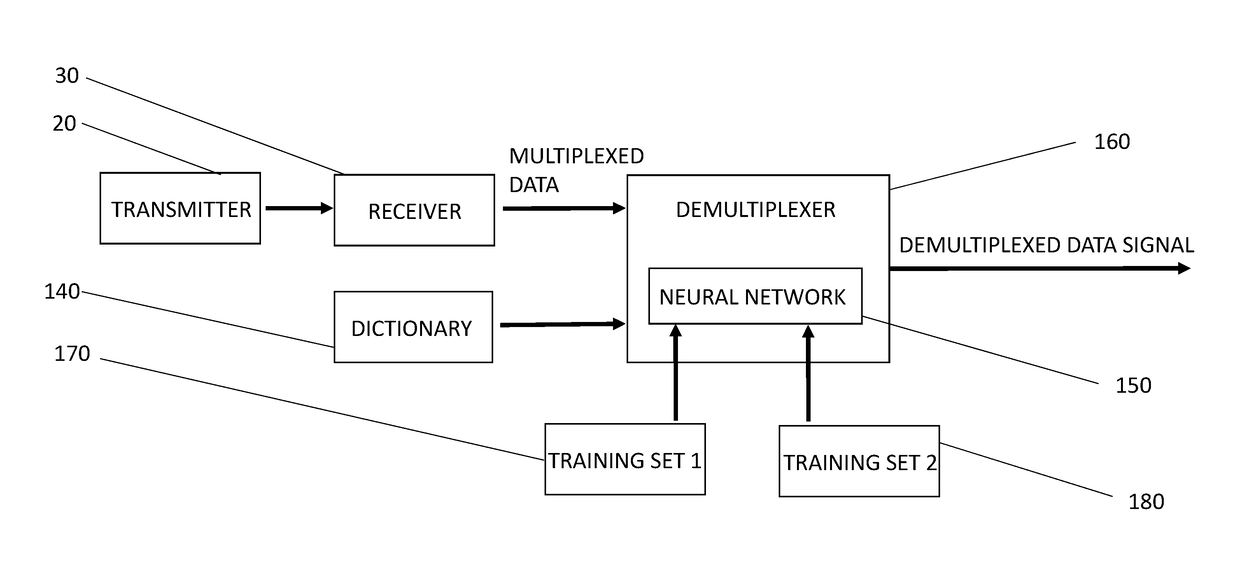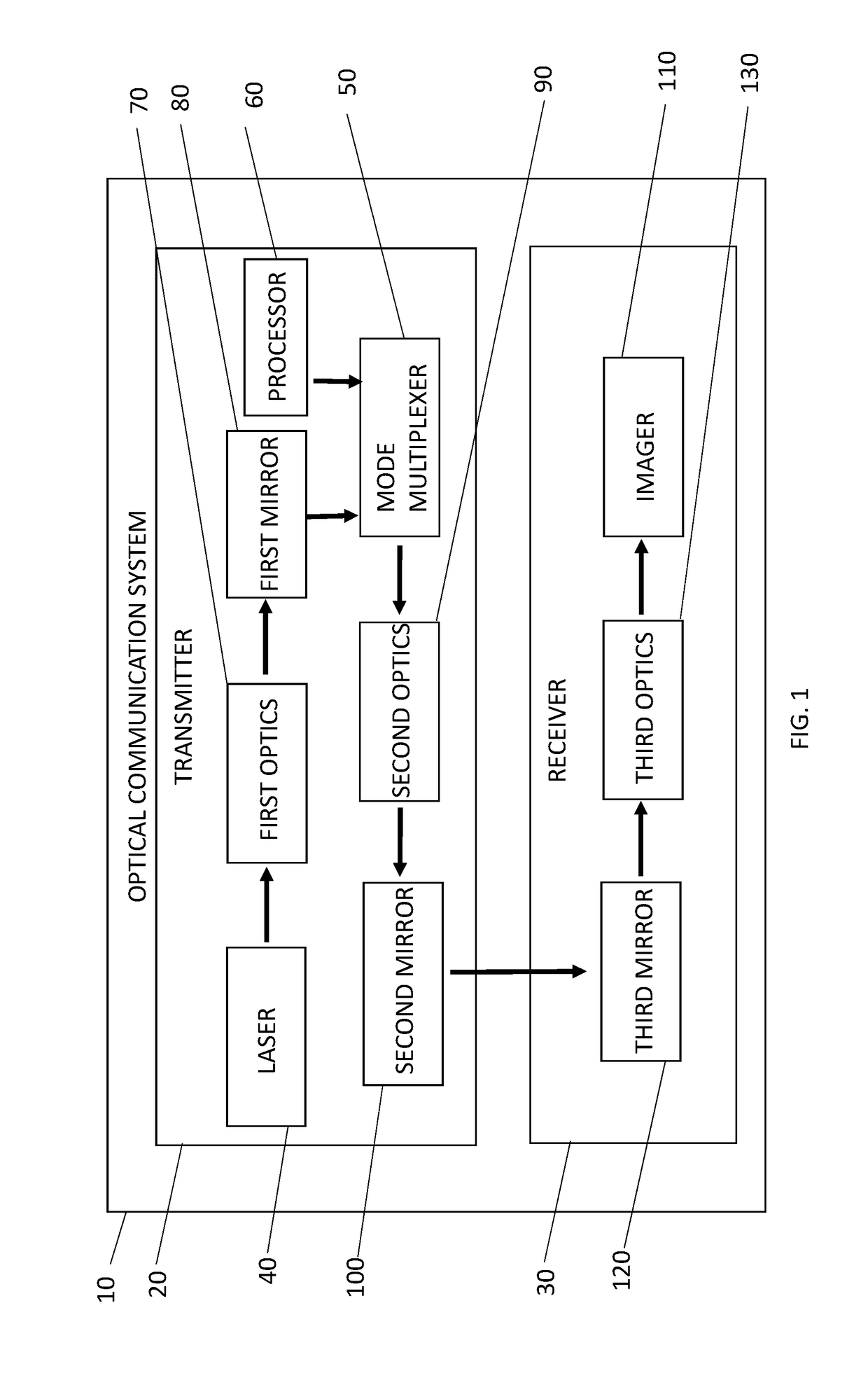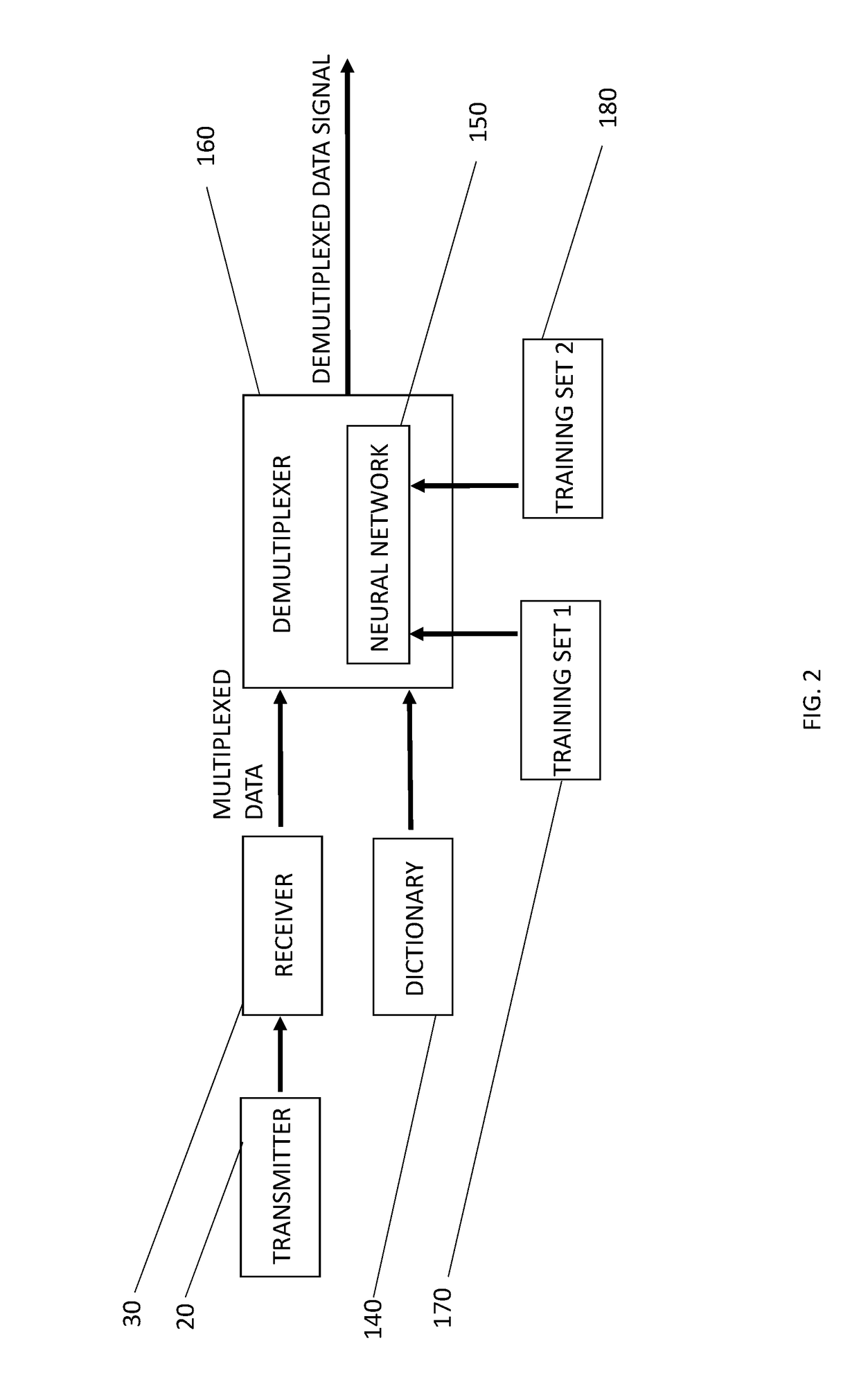Method for free space optical communication utilizing patterned light and convolutional neural networks
- Summary
- Abstract
- Description
- Claims
- Application Information
AI Technical Summary
Benefits of technology
Problems solved by technology
Method used
Image
Examples
Embodiment Construction
[0019]An embodiment of the invention includes an optical communication system 10, which is described as follows with reference by way of illustration to FIGS. 1-3. As shown by way of example, in FIG. 1, the optical communication system 10 generally includes a standard optical communications transmitter 20 communicating with a standard optical communications receiver 30 over a turbulence-inducing environment. Examples of such environments include a free-space environment and a water environment. One of ordinary skill in the art will readily appreciate that the optical communications transmitter 20 includes a standard free-space optical communications transmitter or a standard underwater optical communications transmitter, depending on the environment through which optical signals are to be transmitted. Likewise, one of ordinary skill in the art will readily appreciate that the optical communications receiver 30 includes a standard free-space optical communications receiver or a stand...
PUM
 Login to View More
Login to View More Abstract
Description
Claims
Application Information
 Login to View More
Login to View More - R&D Engineer
- R&D Manager
- IP Professional
- Industry Leading Data Capabilities
- Powerful AI technology
- Patent DNA Extraction
Browse by: Latest US Patents, China's latest patents, Technical Efficacy Thesaurus, Application Domain, Technology Topic, Popular Technical Reports.
© 2024 PatSnap. All rights reserved.Legal|Privacy policy|Modern Slavery Act Transparency Statement|Sitemap|About US| Contact US: help@patsnap.com










